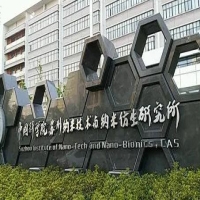Progress in research on high rate and ultra long cycle life lithium sulfur batteries at Suzhou Institute of Nanotechnology
TIME:2015-07-22 16:45:15

Lithium sulfur batteries have advantages such as high theoretical energy
density, low cost, and environmental friendliness. Their theoretical specific
capacity and energy density are 1675mA h g-1 and 2600 mA h g-1, respectively,
far superior to existing lithium-ion batteries. They have broad application
prospects in emerging technologies such as new energy power batteries. However,
the conductivity of its positive electrode active material is low; The
polysulfides generated during the charging and discharging process are easily
soluble in the electrolyte solution, causing a "shuttle effect"; The volume
expansion contraction phenomenon that occurs during the insertion and removal of
lithium leads to problems such as low utilization of active sulfur substances
and short cycle life, which limits the further development of existing lithium
sulfur battery technology and applications. In recent years, researchers have attempted to design various novel
nanostructured sulfur cathode materials to improve their battery performance.
Among them, graphene, due to its unique two-dimensional structure, has high
specific surface area, excellent conductivity, and stable structure, which has
great potential to be used as a conductive substrate in lithium sulfur battery
systems. Zhang Yuegang's team from the International Laboratory of Suzhou Institute
of Nanotechnology and Nanobionics, Chinese Academy of Sciences, recently
proposed a simple, low-cost and controllable method to prepare high
magnification, ultra long cycle life cathode composites. This material
encapsulates S nanoparticles in nitrogen doped graphene layers (S @ NG), only
mixed with PVDF binder without adding any carbon black material. The assembled
battery exhibits extremely high specific capacity under high discharge rate
conditions, such as 1167 mA h g-1 at 0.2C; 1058 mA h g-1 at 0.5C; 971 mA h g-1
at 1C; At 2C, it is 802 mA h g-1; At 5C, it is 606 mA h g-1. In addition, the
battery can achieve an ultra long cycle life of 2000 times, with a capacity
degradation rate of only 0.028% per cycle. The relevant results have been
published in the journal Nano Letters (DOI: 10.1021/nl5020475).
The sulfur content of the positive electrode of the battery can reach up to
60%, and it has excellent Coulombic efficiency (about 97%) during the cycling
process. Even after 2000 cycles, its specific capacity can still compare to the
best lithium-ion batteries today. After X-ray absorption spectroscopy and first
principles simulation analysis, the excellent performance of this material is
attributed to the excellent adsorption of N functional groups in nitrogen doped
graphene layers on lithium polysulfides. The research results also confirm that
lithium sulfur batteries based on S @ NG composite materials have great
potential to replace existing lithium-ion batteries in portable electronics, new
power energy and other energy storage fields.

![[field:title/] [field:title/]](/uploadfile/202504/80f770e46696ba4.png)
![[field:title/] [field:title/]](/uploadfile/202407/0fbb04c355bb2.jpg)
![[field:title/] [field:title/]](/uploadfile/202312/677ac8d034350a8.jpg)
![[field:title/] [field:title/]](/uploadfile/202312/4fa579d8c53d9a6.jpg)
![[field:title/] [field:title/]](/uploadfile/202312/acb5267c9ee2f5d.jpg)
![[field:title/] [field:title/]](/uploads/181130/1-1Q13016350Ha.jpg)
![[field:title/] [field:title/]](/uploads/181130/1-1Q130162Q4D8.jpg)
![[field:title/] [field:title/]](/uploads/181130/1-1Q1301626292U.jpg)
![[field:title/] [field:title/]](/uploads/allimg/181130/1-1Q1301623580-L.jpg)
![[field:title/] [field:title/]](/uploads/allimg/181130/1-1Q1301554200-L.jpg)
![[field:title/] [field:title/]](/uploads/allimg/181130/1-1Q1301543090-L.jpg)

